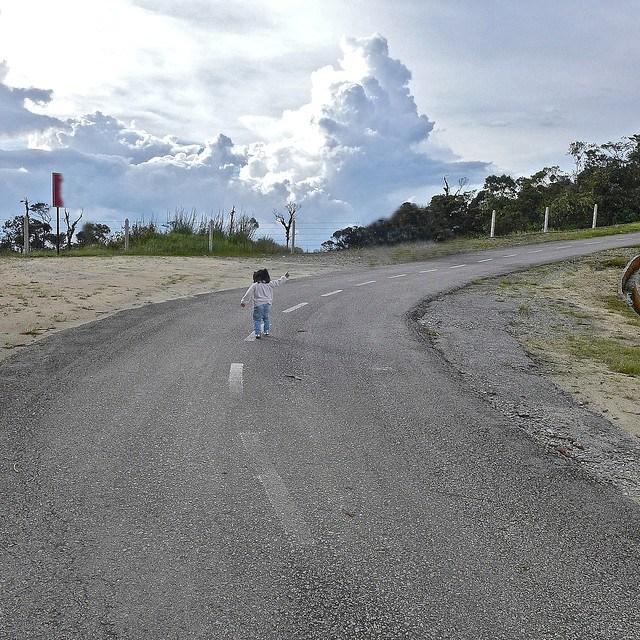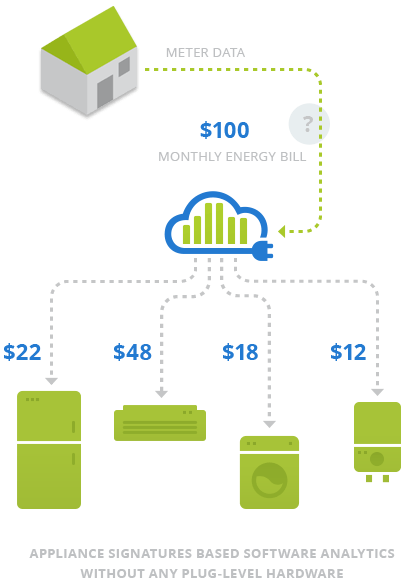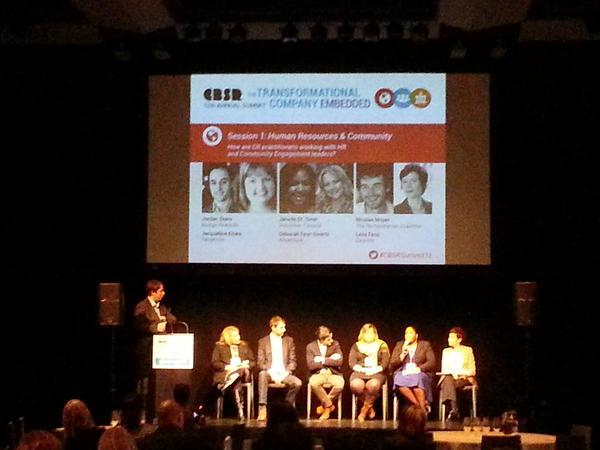State Attorneys General Make Secret Pact With Big Oil to Oppose EPA


Last week I wrote a story about the outpouring of support for the EPA’s Clean Power Plan among both businesses and state legislators. Of course, with a measure dealing with a subject as volatile as climate change, not everyone is going to agree on the course of action, or whether action should even be taken.
But you might be surprised to learn who is opposing this and how they are going about it. A story broke in last week’s New York Times about how various energy companies had formed a secretive alliance with a group of state attorneys general. For example, Oklahoma’s Attorney General Scott Pruitt sent a letter to EPA officials, asserting that the agency was grossly overestimating the amount of carbon pollution being generated by natural gas wells operating in the state. What Mr. Pruitt failed to mention, as the Times learned through an open records request, was that the letter had been written by attorneys for Devon Energy, one of Oklahoma’s largest oil and gas companies, and then cut and pasted directly onto the attorney general’s letterhead.
In other words, Mr. Pruitt was using the power of his office to give the oil company’s appeal more clout, insinuating, if not outright stating, as a letter from an attorney general is apt to do, that legal action could potentially follow. The email exchange obtained by the Times revealed notes from the company, heartily thanking Pruitt for his help.
A similar pattern plays out in at least a dozen states. Corporate donations to the political campaigns of attorneys general exceeded $16 million this year, collected by the Republican Attorneys General Association, which Scott Pruitt heads.
There are a number of reasons why this is not okay. First of all, the attorney general is the top law enforcement official in the state. His or her job is to uphold the law and protect the people. That means the majority of the people and the land, water and air that the people need to survive. It doesn’t mean the people with the most money or those that happen to share their political philosophy.
Second, the idea the regulations are bad for business is wrong-headed. The idea, that “greed is good,” that was promulgated by Gordon Gecko in the movie "Wall Street," has been debunked time and again -- and should have been retired for good after the financial collapse of 2008. Yet it still has its adherents.
Let me be clear, economic self-interest (aka greed) is a powerful force that can motivate great benefits for all people. It is, no doubt, the force that has brought our country to its current economic stature, both the boom years and the disaster that we are still trying to recover from. But a world without the means to exert a force to counteract the effect of unchecked greed is a world out of control.
Let me give a simple example: A truck is barreling down the highway, and a small child wanders into the roadway ahead of him. At the very least, the driver is going to slow down and drive around the child, even if that costs him a tiny bit of time and money. That’s a no-brainer. No one would argue that. If anything, some might argue that the driver should do more than that, and, of course, that the child shouldn’t have been there. But in real life, stuff happens.
What regulations do is they let companies know that they are headed full-steam towards doing harm, though the harm is not as easy to see, or the remedy so easy to effect, as in the example I gave above. They protect the people and our shared environment, from what the enthusiastic pursuit of profit might have overlooked in its single-mindedness. Now, of course, not all regulations are well-conceived, and companies are entitled to bring their concerns of fairness to the table as part of the democratic process. But that is not what is happening here.
Some will argue that it’s just as valid for those to oppose the plan as to support it. They would be correct in principle. But let’s look at how this is being done: Those supporting the plan announced their support in a public press conference, while those opposing in this way were operating in secret, only to be exposed by rigorous investigative journalism. That should tell you something. Those supporting the plan know that they will, in some cases, experience some economic challenges (e.g. higher short-term energy prices) as we transition, but they understand the longer-term systemic implication and see their support as an investment in the future. Further, they are looking beyond their own immediate bottom line to the greater good of the society that they and all their customers live in.
Those using this illicit and corrupt approach to oppose the plan are doing none of that, which is why they feel the need to operate in secret. They are driven only but their immediate short-term bottom line.
It would be overly simplistic to suggest that this is simply a moral failing on the part of the executives. To some extent, it is our Wall Street economy that puts these pressures on executives who have an obligation to deliver attractive returns to their investors. That’s why the system itself needs to be regulated and why we need regulations to make doing the right thing a cost of doing business. Then there will be those that pull their trucks over to the side of the road and safely escort the child home, and those that simply slow down and veer around her, but, in either case, at least the child will be safe.
Image credit: FlabbyPanda : Flickr Creative Commons, alterations via RP Siegel
RP Siegel, PE, is an author, inventor and consultant. He has written for numerous publications ranging from Huffington Post to Mechanical Engineering. He and Roger Saillant co-wrote the successful eco-thriller Vapor Trails. RP, who is a regular contributor to Triple Pundit and Justmeans, sees it as his mission to help articulate and clarify the problems and challenges confronting our planet at this time, as well as the steadily emerging list of proposed solutions. His uniquely combined engineering and humanities background help to bring both global perspective and analytical detail to bear on the questions at hand.
Follow RP Siegel on Twitter.
Young v. UPS and the Rights of Pregnant Women in the Workforce


Last week, the Supreme Court heard oral argument in Young v. UPS, a case that could change the way pregnant women are treated by their employers. The case will force conservative justices to choose between two core right-wing constituencies: anti-choice activists and pro-business groups.
The facts
In 2006, Peggy Young was in her fifth year as a part-time driver for UPS, a position which required her to move mostly envelopes and small packages. When she became pregnant, her doctor advised her against lifting more than 20 pounds for the duration of her pregnancy. UPS policy requires all drivers to be able to lift up to 70 pounds at a time, so Young asked the company if she could be put on “lighter duty” while pregnant -- i.e., if she could answer phones or work a desk job -- which UPS provided for employees who were (i) disabled, (ii) had been injured on the job or (iii) had lost their commercial driver’s license.
UPS denied Young’s request, reasoning that pregnancy was neither a disability nor an on-the-job injury and therefore did not warrant a lighter-duty assignment. Instead, she was put on immediate unpaid leave and lost her benefits -- including her health insurance -- for the next nine months.
Young sued UPS under the Pregnancy Discrimination Act (PDA), which in 1978 amended Title VII of the Civil Rights Act of 1964 to explicitly prohibit sex discrimination on the basis of pregnancy.
The arguments
UPS’ defense was that its policy was “pregnancy neutral,” meaning it didn’t explicitly discriminate against against employees based on their pregnancy status. In other words, the policy said [1] nothing about pregnancy one way or another; rather, pregnancy was just one of many potential conditions that would not have qualified for a lighter-duty assignment.
The trial court and the Fourth Circuit agreed with UPS. The company did not single out pregnant workers for worse treatment, they argued, nor did it deny pregnant workers the same rights as those who did meet the company requirements for light duty. In other words, if Young happened to be pregnant and was injured on the job, she wouldn’t have been denied lighter duty on the basis of her pregnancy. To the Fourth Circuit and the lower court, that is all the PDA requires.
Young argued that the PDA requires more. If UPS gave lighter duty to those with non-pregnancy-related impairments, Young contends, then it must provide lighter duty to similarly impaired pregnant employees.
This reading of the PDA is consistent with new guidance issued by the Equal Employment Opportunity Commission (EEOC), which states that forcing a pregnant woman to take leave is discriminatory. The new EEOC guidance also incorporates the 2008 amendments to the Americans with Disabilities Act (ADA), which classified certain pregnancy-related conditions as disabilities.
Young’s position is also supported from a plain reading of the PDA, which states in pertinent part:
"[W]omen affected by pregnancy, childbirth or related medical conditions shall be treated the same for all employment-related purposes, including receipt of benefits under fringe benefit programs, as other persons not so affected but similar in their ability or inability to work, ..." (my emphasis)
At the Supreme Court
Court watchers were unsure which way the Justices seemed to be leaning at the oral argument on Dec. 3. On the one hand, Justice Elena Kagan was reportedly dogged in her questioning of UPS’ lawyer, Caitlin Halligan [2]. To Justice Kagan, the PDA “was supposed to be about ensuring that [pregnant women] wouldn’t be unfairly excluded from the workplace.” If UPS’ position were to prevail, the core of the PDA would be eviscerated.
Justice Antonin Scalia, on the other hand, accused Young of demanding “most-favored-nation status” for pregnant women. (Justice Ruth Bader Ginsburg shot back that UPS’ position relegated pregnant employees to “least-favored-nation” status.)
Perhaps the most troubling questioning, however, came from Justice Stephen Breyer, a typically principled member of the Court’s liberal wing. Justice Breyer posed perplexing hypotheticals to Young’s lawyer, Michigan law professor Samuel Bagenstos, such as: If a company wants to award “a benefit to a truck driver who has driven over a particularly difficult mountain pass,” does it have to offer this same benefit to pregnant workers? Perhaps Breyer was seizing upon the absurdity of the slippery-slope arguments made in the UPS brief, which, as The Economist noted, included the following: If a “CEO receives company-provided transportation as an accommodation for a back injury," must the “pregnant mailroom clerk” receive the same transportation because she has “the same physical capacity to work?"
This line of questioning is as ponderous as it is condescending, implying as it does that, if Young were successful, whiny pregnant women all over would start to demand pampering.
Public opinion
Condescension was a theme among those opposed to Young. The Wall Street Journal’s editorial page, for instance, accused “activists” of “holding [the Young v. UPS case] up as a cause celebre of the American sisterhood,” before dropping this knowledge on its readers:
"In the real world, most employers aren’t in the habit of picking fights with their pregnant employees to make their lives miserable. UPS had accommodated Ms. Young during previous pregnancy-related requests, including rounds of in vitro fertilization. We agree with Ms. Young that UPS managers acted like dunderheads when they sent a longtime employee on unpaid leave, but not being nice enough is not the same as discrimination under the law."
Meanwhile, Young v. UPS has managed to unite women’s rights advocates with pro- and anti-choice groups, all of which are opposed by pro-business groups. (Twenty-three anti-choice groups joined Legal Momentum, previously known as the NOW Legal Defense Fund, and a group of law professors in filing separate amicus briefs to the Court, urging the Justices to adopt Young’s interpretation of the PDA.) The rationale of the anti-choice groups is that “[e]conomic pressure is a significant factor in many women’s decision to choose abortion over childbirth.” Put another way, UPS’ (old) policy makes pregnancy less financially viable for women, which makes abortion correspondingly more likely.
The business community opposes Young because her reading of the PDA would be a purported expansion of Title VII, which would “ramp up the penalties for businesses.” If UPS loses, “Title VII would have a third category of discrimination for which employers could be accused of discrimination even if their policies were neutral.”
The question, then, boils down to this: With which constituency is the conservative majority of the Court more likely to side: the anti-choice, or the pro-business block? We’ll find out next year.
Image credit: Flickr/bayuaditya
[1] Importantly, in October UPS changed its policy to offer lighter duty "as an accommodation to pregnant employees with lifting or other physical restrictions to the same extent" as those with similar impairments resulting from on-the-job injuries. In other words, exactly what Young was seeking.
[2] One feels for Halligan, a highly-regarded appellate lawyer (and former colleague of mine). Rather than arguing this case on behalf of UPS, Halligan should currently be a sitting judge on the D.C. Circuit -- one of the most important courts in the country. In 2010, President Obama nominated Halligan to fill the seat vacated by Chief Justice Roberts. Yet, Halligan’s nomination never even got a floor vote in the Senate because the Byzantine rules that govern modern Congressional procedure didn’t allow it. (In essence, Republicans, who objected to Halligan’s nomination because of her purported position on guns, were able to block a floor vote five different times because Democrats didn’t have the 60 votes needed to force the vote (what’s called “cloture” in Congressional parlance)).
Video: R. Paul Herman of HIP Investor Talks Diversity at Net Impact '14


"At HIP Investor we rate investments on their overall sustainability, future risk and return, and a key element of every investment and company that you invest in is the diversity of its staff, managers, executives and board," R. Paul Herman, founder and CEO of HIP Investor, said at the 2014 Net Impact conference.
"What we find in investing is: The most diverse staffed companies tend to be the strongest performers, so they can make more money and have lower risk."
As part of our Talking Diversity video series, Herman goes on to describe how diversity is a part of sustainability -- and how it can boost bottom-lines and investment portfolios -- in this two-minute clip.
An internationally recognized expert in impact investing, R. Paul Herman invented the “HIP = Human Impact + Profit” ratings system in 2004. HIP Ratings show that portfolios and companies can realize lower risk, enhanced returns and profit potential, and build a better world — by focusing on the root-cause drivers of value creation, which include human (customers, employees), social (trust, governance) and environmental (energy, water) factors, and their associated impact on profit.
The HIP Investor team rates and ranks more than 7000+ investments and funds globally, including 4500+ companies worldwide, and 2,500+ issuances of bonds (municipals, sovereigns and agencies). HIP’s Ratings reveal undiscovered risks and potential sources of untapped returns.
EHRC launches new online resources for young people


A new online resource to enable children and young people to contribute to a review of how the UK complies with the United Nations Convention on the Rights of the Child (CRC) is being launched by the Equality and Human Rights Commission (EHRC) to mark International Human Rights Day.
The web-based resources describe the CRC and what it says a child needs to survive, grow, and live up to their potential in the world.
Consisting of an animated film and a series of fact sheets, they also explain how young people across England and Wales can give their views as part of the UN’s review of the UK’s compliance with the Convention.
The UK Government ratified the CRC in 1991 and must report periodically to the UN on the steps it has taken to protect the rights set out within it.
Equality and Human Rights Commission Chief Executive Mark Hammond said: “Human rights are for everyone, and that includes children and young people. We hope this new online resource will give them a better understanding of their rights and ensure they can play an active role in protecting and promoting them for themselves and other children in the future. Focusing on the rights of the child is a great way to mark International Human Rights Day.”
Picture credit: © Celiaak | Dreamstime.com - Seamless Paper Children Holding Hands Photo
Swiss Company Develops Sharp Looking, Compostable Fabric


There’s no question that the global textile industry has a massive effect on the planet, much of it negative. From workers’ rights to factories to the pesticides used on cotton farms, the social and environmental impacts are evident across the entire supply chain. Efforts such as the Better Cotton Initiative have started to make a difference, but the industry still has a long ways to go. The Swiss company, Freitag, however, is on not only on a quest to transform how fabric is manufactured, but to change how it is disposed—as in composting.
Founded by two brothers, Freitag has been in business since 1993 and employs about 160 people. The company owns 10 stores in central Europe and Japan, and has over 50 products on the market. In addition to turning truck tarps into heavy-duty bags, the company produces what it says is 100 percent compostable fabric.
The trick is the blend: linen, hemp and modal, which is reconstituted cellulose from beech trees. This fabric, or what Freitag calls F-Fabric, took about five years to develop. The raw materials are all grown within Europe, therefore reducing imports from across long distances. True, cotton is a natural fiber, but Freitag shunned it for several reasons: it has to be imported because Europe’s climate is too cold for the crop; requires too much water; needs a vast amount of space; consumes heaps of pesticides; and finally, the company estimates 100 million cotton farmers across the world live below the poverty level and work in terrible conditions. Instead, flax is sourced from Normandy, hemp is resilient in just about every climate and beech trees self-propagate—no planting regimen is required. Not only is the fabric sustainable, but Freitag describes it as truly local.
The result is fabric and garments that are also biodegradable and completely compostable, and that includes the thread and selvage (the finishing edge on woven fabric that prevents it from unraveling). The one exception is the buttons—which are metal and just need to be removed, or actually, unscrewed, before the garments are pitched into a compost heap—and of course those buttons can be reused. The material is woven into a broken twill, jersey, or herringbone, and is also in several colors. One exception, however, is indigo: Freitag found hemp and linen fibers were weakened and torn after the dyeing process.
One of the results is Freitag’s chino workpant, made from compostable twill fabric that according to the company is moisture-wicking, antibacterial and strong enough for any work environment. At the moment a pair will set you back $230, or about €190. But if more companies can take Freitag’s lead and develop scalable, and more sustainable, alternatives to the cotton and synthetic materials on the market, eventually these fabrics could become price competitive. Between labor conditions in some countries and questions whether the enormous fashion industry can really be responsible and ethical, watch for companies such as Freitag to score more attention in the coming years.
After a year in the Middle East and Latin America, Leon Kaye is based in California again. Follow him on Instagram and Twitter. Other thoughts of his are on his site, greengopost.com.
Image credit: Freitag
Why B Corps Should Expand Their Health and Wellness Programs


This is a weekly series of excerpts from the new book “The B Corp Handbook: How to Use Business as a Force for Good“ (Berrett-Koehler Publishers, October 2014). Click here to read the rest of the excerpts.
By Ryan Honeyman
Certified B Corporations are companies that have met rigorous, independent standards of social and environmental performance, accountability and transparency. However, like any company, there are always areas of improvement.
One of the best areas for B Corps (and other sustainable businesses) to improve is by providing health and wellness programs to their employees. These programs usually focus on things like stress management, mental health, fitness, nutrition and work/life balance.
In addition to helping individual workers, healthy living programs have been shown to enhance a company’s bottom line. For example, Johnson & Johnson estimates that its health and wellness program had a return on investment of $2.71 for every dollar spent between 2002 and 2008. A study of a different employer found an even higher return: Every dollar invested in healthy interventions yielded $6 in health-care savings.
One innovative way of reducing stress is to keep workers and their families closer together. Patagonia (one of the most well-known B Corps) has provided subsidized, on-site child care since 1984. Founder Yvon Chouinard asserts that on-site child care is a profit center rather than a financial burden. “Seventy-one percent of our employees are women, and many occupy high-level management positions,” says Chouinard. “Studies have shown that it costs a company an average of $50,000 to replace an employee — from recruiting costs, training and loss of productivity. Our child-care center helps us retain our skilled moms.”
How can you implement this at your company?
There are many different things you can do to promote employee health and wellness. For example, B Corps offer a variety of benefits to workers, such as gardening classes, office yoga, discounted gym memberships, lunchtime running groups, organic fruit and healthy snacks, juicing classes, free access to a nutritionist, wellness goal-setting, and a company-hosted, community-supported agriculture program.
If you are inspired to create (or improve) your health and wellness program, consider talking to your insurance carrier about possible discounts and incentives. It is in their best interest to offer wellness options. The healthier your employees are, the fewer claims insurers will need to pay. In addition, try putting your health and wellness policy in writing. A formal policy is a useful communication tool that can help support a culture of wellness.
John Mackey of Whole Foods Market has an interesting approach to deciding which benefits to implement:
Every three years, we open up all the benefits for a mass vote. The leadership decides what percentage of the total revenue will go toward benefits for the company, and then assign the cost for every potential benefit. Team members prioritize and vote on the benefits that they most prefer. This process results in benefits that reflect the needs and desires of the majority of the team members in the company. Team members often select benefits that the leadership did not necessarily think were good decisions. For example, they got rid of the benefit that paid people for community service hours, opting instead for more paid time off.
For more information, check out the B Resource Guide "Creating an Employee Wellness Program."
Image credit: B Lab
Ryan Honeyman helps organizations like Ben & Jerry’s, Method, Klean Kanteen, Nutiva, and CleanWell become Certified B Corporations and maximize the value of their B Corp certification. He is the author of The B Corp Handbook: How to Use Business as a Force for Good (Berrett-Koehler Publishers, October 2014). To get exclusive updates and free resources about the B Corp movement, sign up for Ryan’s monthly newsletter. You can also visit honeymanconsulting.com or follow Ryan on Twitter:@honeymanconsult.
Utilities Roll Out Home Energy Analytics to Over 1.5 Million


Aiming to build a mass market for energy efficiency products and services, energy industry startups and established players are rolling out a range of connected demand response and demand management products and services for homes and businesses. They range from smart thermostats and home energy management apps to lighting controls, solar energy and battery storage systems.
Positioned at the leading edge of the U.S. residential solar market, SolarCity, SunPower and others are working with public and private partners to commercialize the first generation of home solar-battery storage systems, as well as link in electric vehicles (EVs) and EV charging stations. Companies such as Nest (acquired by Google in a $3.2 billion transaction this past January) are leveraging the power of cloud computing in a bid to build a mass-market home energy management platform.
SolarCity just announced it is launching a mobile app “that aims to strengthen its relationship with customers by providing real-time energy use data and creating a social network for its customers to swap stories and photos,” Forbes' Ucilla Wang reports in a Dec. 5 article.
Facing real competition from new market entrants for the first time since the dawn of electricity grids, utilities are keen to be part of the action. On the other hand, they are taking reactionary, rearguard action to stem market and environmental regulatory reforms that would accelerate the pace of change.
Cloud-based home energy analytics
Viewed as a means of reeling in and keeping prospective customers, smart home technology vendors and energy companies are turning to public outreach and customer engagement as key business development tools. On Nov. 20, Bidgely, a young clean tech company that specializes in “customer engagement and utility intelligence,” announced that London Hydro will integrate its cloud-based energy intelligence analytics with its My London Hydro customer portal.
Expected to go live in early 2015, the enhanced My London Hydro Web portal will reach over 150,000 homes, “adding appliance-level monitoring and personalized energy savings recommendations to London Hydro's portal to help the utility improve customer satisfaction and engagement levels,” Bidgely highlights in a press release.
Its first contract in Canada, the London Hydro project follows closely on the heels of a much larger deal Bidgely sealed here in the U.S. On Nov. 6, Texas electric utility TXU Energy announced that it had signed a deal to integrate its MyEnergy Dashboard with Bidgely's cloud-based energy services and advanced analytics platform.
Taken private in a $45 billion leveraged buyout (LBO) in 2007, TXU Energy will roll out its enhanced MyEnergy Dashboard across its roughly 1.5 million-strong customer base. Commenting on the announcement, Raymond James & Associates' senior vice president and equity research analyst, Pavel Molchanov, commented:
“Ranked between the United Kingdom and Italy in terms of annual power usage, Texas is a useful case study for changes in how consumers buy and manage their electricity. And with intense competition to serve the state’s 6.7 million retail electric consumers – nearly all of whom have smart meters – retail electric providers are looking to enhance their customer relationships by providing analytics that consumers can use to understand and control their power usage.”
'Disaggregating' energy usage data
TXU's project will provide valuable empirical data and insights regarding utility customer uptake and use of personalized energy management tools and analytics. This affords executives at utilities and app and platform developers, as well as investors, indications on prospects for commercial success.
The data gleaned from deploying this first generation of smart energy data and analytics platforms will be of great value in other ways. It will enable power grid operators and regulators, as well as utilities, to evaluate demand response (DR) and demand-side management (DSM) as mechanisms for enhancing the efficiency, flexibility, reliability and resiliency of U.S. power and energy infrastructure, as well as accelerate integration of renewable energy generation capacity.
The key to Bidgely's cloud-based, real-time energy analytics platform is its ability to “disaggregate” data on electricity usage within buildings and homes down to the level of individual appliances, equipment and devices without the need to install sensors or other hardware. That data can then be used to lower energy consumption and improve energy efficiency. By making that information accessible to home and building owners, it can also enhance customer engagement, or so the reasoning goes.
Results from two 2013 case studies in which Bidgely's energy analytics platform was used – one in California and another overseas – showed that average energy consumption dropped 6 percent, with a maximum of 7.4 percent and a minimum of 4.7 percent. The international study revealed high levels of customer engagement, garnering an 86 percent approval rating from users.
Bidgely management is using the results to push for market and regulatory change. “These studies aim to support the introduction of policies that open up real time data access from smart meters,” the study authors note. “Millions of these smart meters installed in field are already equipped with the right hardware but have not been enabled to deliver the above benefits.”
Image credits: Bidgely
5 Reasons to Move Corporate Responsibility Out of the CR Department


By Elizabeth Dove
Recently, Patagonia announced it was shutting down its sustainability department. Instead, the outdoor clothing and gear manufacturer is taking the responsibilities for sustainability to the entire company through a decentralized approach. Spokespeople for the company have said that management could see the limitations of a sustainability department framework with respect to involving the entire company in having positive impact on the planet.
Through the presentations at the Nov. 26 CBSR Summit in Toronto, a number of smart business arguments emerged about making sure corporate responsibility (CR) gets out of the CR (or CSR or Sustainability or ESG or … ) department and into other parts of the company. They just might start other businesses noodling about the value of following Patagonia’s example of shutting down the department altogether.
- Involvement in CSR mandates creates happier employees: As illustrated through presentations by Tangerine and its innovative partner Nudge Rewards, as well as Accenture and Deloitte, employees love to be meaningfully involved in their company’s citizenship through volunteering. In fact 71 percent of employees say they are interested, but only 12% percent of them are actively aware and involved in corporate social responsibility (CSR) programs, signaling a gap in motivating communication. Getting communication and employee volunteer engagement right is proven to create huge business value, according to Janelle St. Omer of Volunteer Canada, including: increased retention, improved recruitment and strengthened relationships between employees. In fact, for every employee involved in the company CR commitments, $2,400 in value is created through decreasing turnover costs and increasing engagement.
- Investors are watching: Before they even invest, today’s savvy investors are watching the way your company conducts itself. From supply chain management to diversity policies to carbon footprint, company responsibility performance is being measured through reputable sustainability indices, internal sustainability reporting and breaking news – good and bad – all of which reveal how a company walks the talk that is stewarded by the CR department. According to Heather Lang of Sustainalytics, investors are most interested in companies with the long view, those that demonstrate awareness of key environmental, social and governance (ESG) risks they are facing and related efforts to mitigate them.
- Resources to report possibly outweigh resources to support: It’s a balance companies need to reflect upon. Because the summit presentations on reporting would seem to indicate enormous energies going into CR reports -- wildly varied in their comprehensiveness, slicing the data in a variety of directions and swinging back again to a trend of including stories. This isn’t to say that reporting isn’t necessary and important (if not widely read) by showing progress over the short and long term, creating accountability and goals for progress. Not at all. But I worry for companies for whom corporate responsibility is more of a data capture exercise than resourced efforts to innovate and motivate the entire company to act more boldly to create a positive social and environmental legacy while building business value.
- Ensure you don’t end up in court: The United Nations Guiding Principles on Business and Human Rights (UNGP) have raised the responsibility stakes to new levels -- and most companies aren’t even aware of their new legal responsibilities, says Yousuf Aftab of Enodo Rights. Formalized in 2011, the UNGP (also known as the Ruggie Principles) compel companies to put a system in place that identifies human rights issues that may arise and reacts. They create a more precise lens for testing, in court, rights, causation and proportionality. No longer considered a ‘soft-law’ without teeth, Aftab gave several recent examples of courts taking companies to task for claiming to be serious about human rights but failing to have a system in place to identify human rights issues and react as per the UNGP. Such a system cannot logically be the responsibility of a single department but requires an entire company to be vigilant in the identify and react process.
- Chances are the public does not care if you disappear: According to Femke de Man of Globescan, a recent study shows that 73 percent of brands could disappear and consumers wouldn’t care. Philanthrophy isn’t making companies distinct and certainly isn’t making up for bad behavior -- trust in business is at its lowest ever, according to de Man. This shouldn’t shock anyone, as many companies operate as if transparency is still in their control -- leaving the “doing good” part of doing well annexed in the CR department and displaying noticeable say-do gap. Your company doesn’t pass the smell test to consumers if you sponsor programs for street kids while failing to pay retail employees a living wage. The commitment to the common good has to be bold, authentic and visible to get stand out stature and ensure the wary public who want something to believe in become loyal customers that stand by your company.
While few companies are in a position of responsibility evolution where shuttering the CR department makes sense, the morale, investor relations, legal and reputation arguments for embedding responsibility throughout the company are impossible to ignore.
Elizabeth Dove is a specialist in strategically engaging the public, companies and government on sustainability and social change. She has worked as senior staff and consultant for initiatives that support the arts, child welfare, public health and particularly international development. Passionate about the power of collaboration, she seeks out projects that bring together actors from different sectors to create value for their organizations and the broader community. She is Senior Vice-President, Strategy at The Divinsky Group and an Associate at Open Spaces Learning, a Canadian change management firm helping companies realize business and social impact. Twitter: @EDove5 @openspaceslearn
Energizing the Supply Chain


By Andre de Fontaine
Many companies know the value of managing and saving energy within their own walls. The company and its employees benefit from lower utility bills, better comfort and more efficient working spaces.
This is especially true for manufacturers. These companies view energy as integral to global competitiveness, increased productivity and profitability; as a result, the U.S. manufacturing sector as a whole has made impressive gains in energy efficiency. Now, a small, but growing, number of companies that have pushed energy efficiency to the boundaries within their own facilities are looking outside their fence lines to help their suppliers reduce energy waste and costs.
Up to 60 percent, and sometimes more, of a manufacturing company’s energy and carbon footprint can reside upstream in its supply chain — from raw materials, transport and packaging, to the energy consumed in intermediate manufacturing processes.
By sharing energy efficiency knowledge with suppliers, manufacturers have the ability to influence the efficiency of the entire supply chain -- and further lessen the overall carbon footprint of the goods they produce.
To help manufacturers make energy efficiency more visible in their supply chains, the Department of Energy’s Better Buildings, Better Plants Challenge -- a national, voluntary industrial energy efficiency leadership initiative -- is working with a select group of Better Plants partners to extend and promote the benefits of energy efficiency to suppliers. DOE helps partners and their suppliers improve efficiency through a series of energy management webinars, access to energy-saving tools and calculators, and energy audits.
Efficient suppliers boost plant productivity
Take three Better Buildings, Better Plants Challenge partners: Johnson Controls, Legrand and United Technologies. All three are manufacturers with longstanding commitments to reducing energy waste in their own operations and are now leveraging their experience and knowledge with their suppliers.
To successfully engage with suppliers, Legrand and Johnson Controls have gone beyond the typical supplier outreach to provide valuable resources to suppliers and help them improve their energy efficiency. This willingness to invest extra effort in on-the-ground resources will ultimately provide environmental and economic benefits for both organizations.
Surveying and auditing suppliers
Johnson Controls was an early leader in educating its suppliers. The company has surveyed and audited suppliers on environmental sustainability and social responsibility for many years. By surveying suppliers, Johnson Controls could identify knowledge gaps and provide suppliers with specific training opportunities tailored to their needs.More recently, Johnson Controls took a hands-on approach to educate its suppliers to become more energy and resource efficient. Johnson Controls launched a pilot program that sends energy efficiency experts to supplier plants, where they train their teams on low-cost/no-cost energy efficiency best practices. As suppliers participated in on-site assessments, Johnson Controls was able to share information on energy management processes and tools while also identifying potential improvement measures and making preliminary estimates of project costs and benefits.
Hands-on training and assessment tools
Through education, Legrand helped illustrate the advantages of energy savings by producing conferences tailored to its larger suppliers. Legrand made sustainability and energy efficiency a key element of the conference agenda, with guest speakers to help suppliers tackle specific strategies and best practices, complemented by real-world examples. This laid the groundwork for more involvement from suppliers in specific energy-efficient supply chain programs.
The majority of suppliers Legrand works with are small- and medium-size companies that don’t necessarily have the resources or depth of knowledge necessary to drive energy efficiency within their facilities. Knowing that their suppliers did not have the staff to design training materials, Legrand developed a toolkit to help them assess and determine energy saving opportunities.
Similar to a grading scale, the toolkit allows suppliers to determine where energy savings opportunities exist. There are a maximum number of points that suppliers can establish by going through the checklist and based on the number, they can determine where the opportunities are.
Piloting supply chain models for wider adoption
Like Legrand,United Technologies (UTC) is working with the Energy Department to pilot different approaches to providing education and training to suppliers. UTC distributed an internally-developed energy management guidebook to its suppliers and is now tapping into DOE resources to further accelerate progress. UTC is connecting its suppliers to energy management webinars conducted by DOE experts and free energy audits from the department’s university-based Industrial Assessment Centers.
Johnson Controls, Legrand and UTC demonstrate the value of successfully partnering with suppliers to advance energy efficiency throughout the supply chain. By reducing energy waste in their own operations, these companies are leveraging their experience and knowledge with their suppliers.
By educating them through strategies like those above, Legrand, Johnson Controls and UTC are giving suppliers the necessary tools to work towards energy efficiency in their own operations. Partnerships forged by providing education, resources and support will ultimately lead to cost savings, more competitive supply chains, and better relationships between producer and supplier.
Andre de Fontaine leads the U.S. Department of Energy’s Better Buildings, Better Plants efforts.
Video: Diana Sánchez of Savvy - Marketing for Good Talks Diversity at NI14


"Sustainability is a worldwide issue. It's something that every person on the planet should be aware of," Diana Sánchez, CEO and co-founder of Savvy - Marketing for Good, said at the 2014 Net Impact conference in Minneapolis last month.
"And, well, the world is a diverse place, so when we talk about sustainability and diversity everyone should be involved to tackle the same issues."
As part of our Talking Diversity video series, Sanchez, who is originally from Mexico City, goes on to describe why companies should care about diversity and how it can help them with innovation and longevity.
Diana Sánchez is CEO and Co-Founder of Savvy - Marketing for Good. Diana was born in Mexico City where she started her career in marketing and communications. She holds a B.A. in Marketing from Universidad Anáhuac México Norte and recently completed a Masters of Social Entrepreneurship from Hult International Business School campus San Francisco. Her experience includes: development and operation of marketing campaigns for global brands, project management, and business development. Diana has worked in Mexico and the U.S., with global for-profit and non-profit organizations such as Net Impact, P&G, Impact Hub, and Hult Prize among many others.